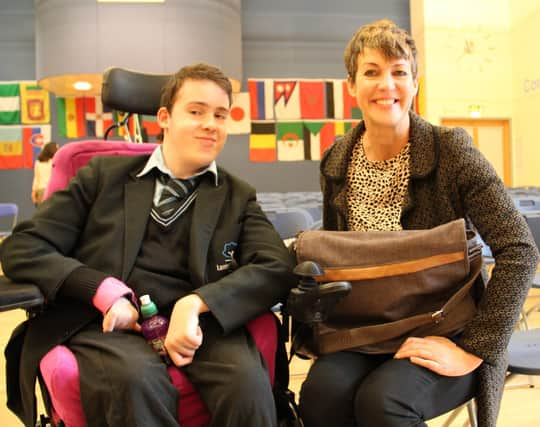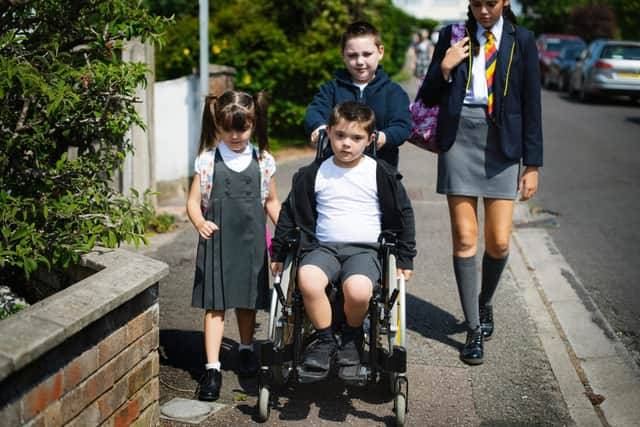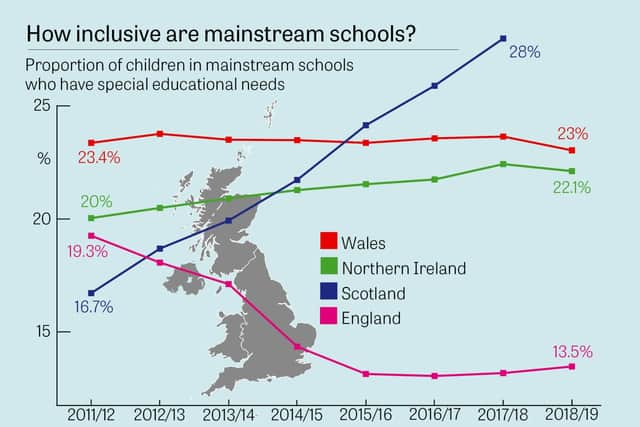Here's why special needs children are battling to get into mainstream schools


Samuel Bartley, 17, has gone to mainstream schools for his whole life.
But at times, getting a place has been a challenge.
Samuel, from south west London, has both physical and learning disabilities and uses a wheelchair.
Advertisement
Hide AdAdvertisement
Hide Ad

His mum Lucy said far more needs to be done to make mainstream education more inclusive.
“Instinctively when Samuel was born, I knew he shouldn’t be treated differently from his sisters," Lucy said.
“Why would you separate a whole group of people on the basis of their impairments? You wouldn’t do that in any other area.”
Lucy Bartley's son Samuel, 17, has gone to mainstream primary and secondary schools. Image supplied by family.
Advertisement
Hide AdAdvertisement
Hide Ad

She said the family “had a battle” getting Samuel into the local primary school his older sister was at.
They ended up fighting the matter at a tribunal, which they won.
Legal protections introduced five years ago emphasised the rights of children like Samuel to go to a mainstream school where possible.
But new analysis by JPIMedia shows that despite this, it is getting harder for many families to secure places.
Advertisement
Hide AdAdvertisement
Hide AdThe number of children with special educational needs (SEN) in mainstream education has fallen by a quarter (24%) in England since 2012, while the number attending special schools has risen by nearly a third (31%).
The Alliance for Inclusive Education (ALLFIE) described the situation as an "on-going attack on disabled people’s rights to be included rather than segregated from society.”
The Government said all schools should be inclusive.
‘A hostile education system’
Lucy campaigns for more inclusion in mainstream schools as a special educational needs disability advocate.
She believes schools put too much emphasis on their results and reputations.
Advertisement
Hide AdAdvertisement